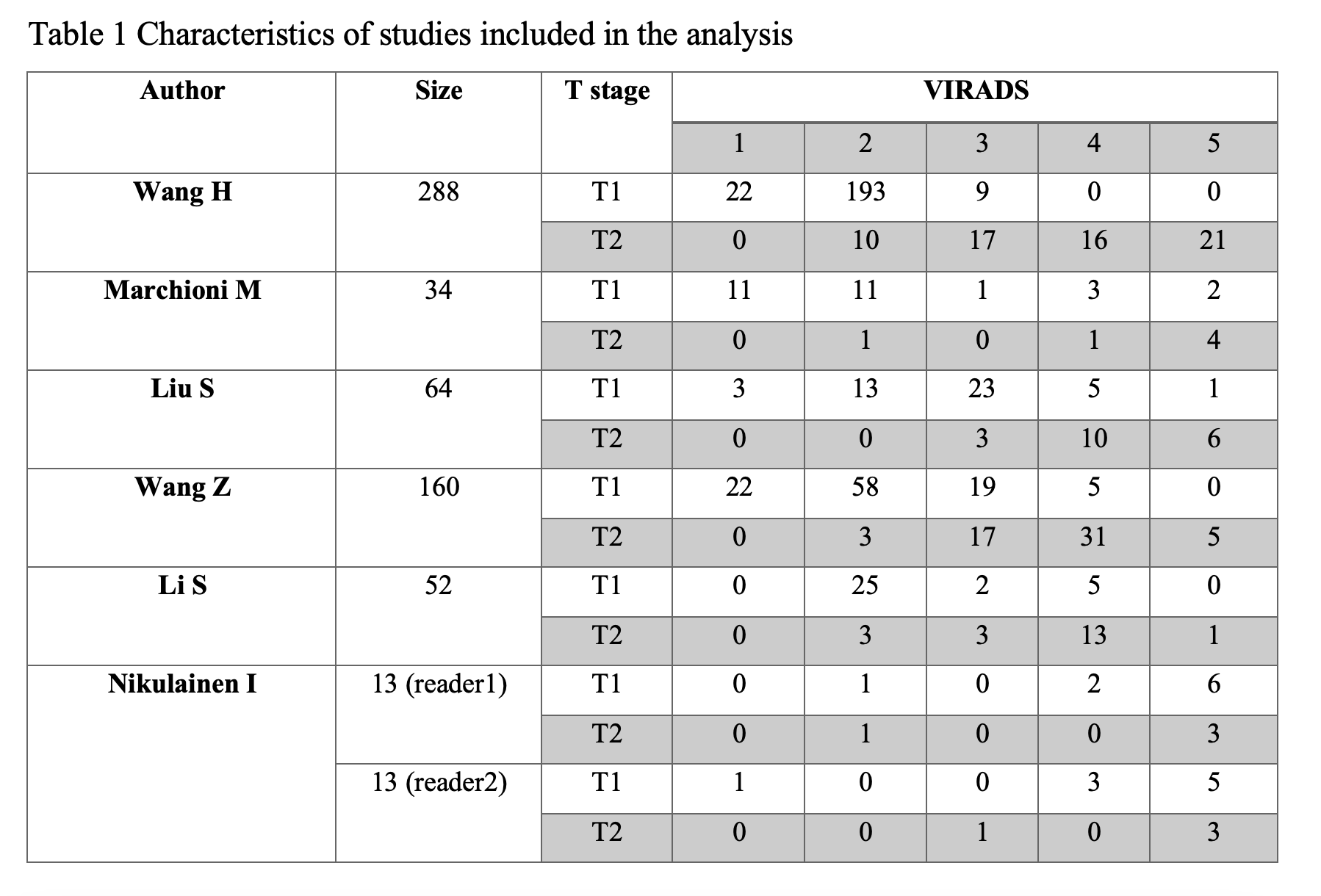Back
Poster, Podium & Video Sessions
Moderated Poster
MP42: Bladder Cancer: Epidemiology & Evaluation II
MP42-08: Can Vesical Imaging-Reporting and Data System Differentiate T1 and T2 Bladder Tumors? A Meta-analysis
Sunday, May 15, 2022
10:30 AM – 11:45 AM
Location: Room 225
Seyed Behzad Jazayeri*, Hojat Dehghanbanadaki, Seyed Behnam Jazayeri, Mahdie Hosseini, Pourya Taghipour, Muhammad Umar Alam, KC Balaji, Mark Bandyk, Jacksonville, FL
- SJ
Poster Presenter(s)
Introduction: The value of Vesical Imaging-Reporting and Data System (VIRADS), a structured scoring system of bladder MRI, is in adjudicating transurethral resection of bladder tumors in which there is lamina propria invasion (pT1) and there is concern about unrecognized muscle invasion. In this case, VIRADS could guide to differentiate between pT1 and pT2 bladder cancer; however, no study has investigated the accuracy of VIRADS for detection of muscle invasion in this borderline population. In this study, we aimed to investigate the diagnostic accuracy of VIRADS for distinguishing T2 from T1 bladder cancer using the raw data of previous studies.
Methods: We systematically searched PubMed, Embase, Scopus, and Web of Science up to October 4th 2021 for studies on VIRADS. We included cohort studies on bladder cancer population with index test of VIRADS, reference test of pathology from cystectomy or re-TURBT, and adequate data of VIRADS for patients with only pathologic stages of T1 and T2. We obtained 6 eligible studies for quantitative analysis. The statistical analyses including ROC curve analysis were performed by MIDAS module with STATA.
Results: The data derived from 6 included studies on 624 MRI reports of patients with T1 and T2 bladder cancer is depicted in Table 1 and Figure 1. The pooled analysis showed that VIRADS =3 guaranteed 0.93 (95% CI: 0.91-0.95) accuracy, 93% (95% CI: 85-97%) sensitivity, 61% (95% CI: 30-86%) specificity for differentiation between T1 and T2 bladder cancer while VIRADS =4 had an accuracy of 0.75 (95% CI: 0.71-0.79), sensitivity of 72% (95% CI: 60-81%), and specificity of 83% (95% CI: 36-98%) in this instance. Nevertheless, the funnel plot asymmetry test showed publication bias for VIRADS=3 (p < 0.01) and VIRADS=4 (p=0.03).
Conclusions: VIRADS, especially at a cutoff of 3, has high sensitivity and specificity in detecting muscle invasion. None of the patients with VIRADS 1 had muscle invasion in the study.
Source of Funding: None


Methods: We systematically searched PubMed, Embase, Scopus, and Web of Science up to October 4th 2021 for studies on VIRADS. We included cohort studies on bladder cancer population with index test of VIRADS, reference test of pathology from cystectomy or re-TURBT, and adequate data of VIRADS for patients with only pathologic stages of T1 and T2. We obtained 6 eligible studies for quantitative analysis. The statistical analyses including ROC curve analysis were performed by MIDAS module with STATA.
Results: The data derived from 6 included studies on 624 MRI reports of patients with T1 and T2 bladder cancer is depicted in Table 1 and Figure 1. The pooled analysis showed that VIRADS =3 guaranteed 0.93 (95% CI: 0.91-0.95) accuracy, 93% (95% CI: 85-97%) sensitivity, 61% (95% CI: 30-86%) specificity for differentiation between T1 and T2 bladder cancer while VIRADS =4 had an accuracy of 0.75 (95% CI: 0.71-0.79), sensitivity of 72% (95% CI: 60-81%), and specificity of 83% (95% CI: 36-98%) in this instance. Nevertheless, the funnel plot asymmetry test showed publication bias for VIRADS=3 (p < 0.01) and VIRADS=4 (p=0.03).
Conclusions: VIRADS, especially at a cutoff of 3, has high sensitivity and specificity in detecting muscle invasion. None of the patients with VIRADS 1 had muscle invasion in the study.
Source of Funding: None



.jpg)
.jpg)